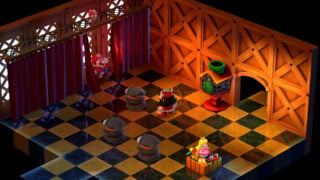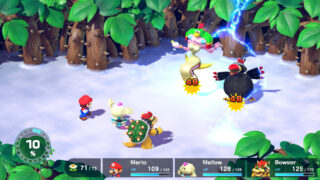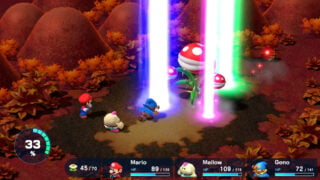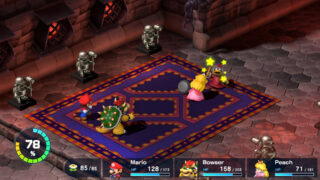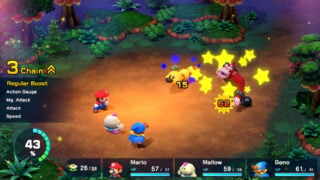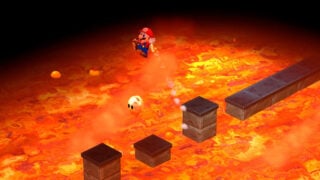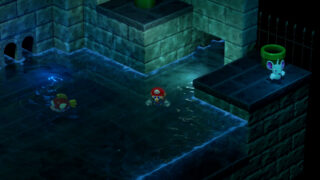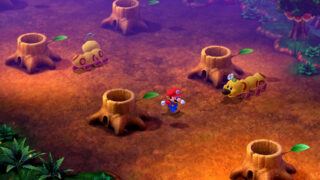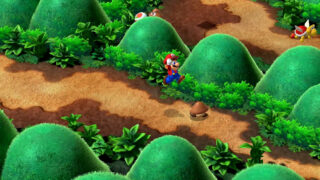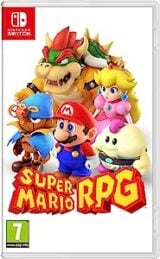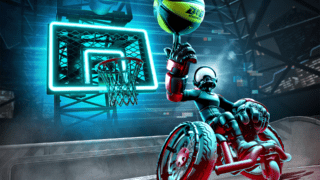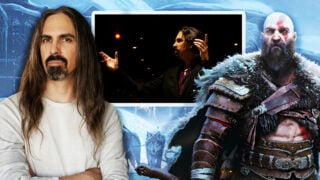Mario RPG feels like a Switch classic made in 1996
Hands-On: Opening hours suggest a staunchly authentic recreation of the SNES classic

‘Remake’ and ‘remaster’ have become common terms in video games, as companies increasingly mine their classic franchises and bring them up to scratch for modern audiences.
Frequent too is the debate around how you define these monikers. How much of a game’s design needs to change before it’s considered a remake? If a remaster replaces virtually every asset from the original, hasn’t the game been ‘remade’?
Nintendo has been careful not to brand its new version of Super Mario RPG, which is due out for Switch on November 17, with either term. But just a few hours into the game, it’s clear that this is a staunchly faithful recreation of the original, to the extent it’s likely to spark yet another remake vs. remaster debate among players.
Either way, fans of the Super Nintendo game will be absolutely delighted by the care that’s gone into recreating it. Switch’s Mario RPG feels like so much of a love letter to the original game that, even though its visual quality has improved drastically since the 90s, you can still see the brush strokes of the original creators on its surface.
More Mario RPG:
Mario RPG Culex Guide | Mario RPG post-game boss rematches guide
The original Super Mario RPG (subtitled, Legend of the Seven Stars) was released in 1996 in Japan and North America. Developed in collaboration with Final Fantasy creator Square, the game is fondly remembered for its unique cast of characters, approachable gameplay, and brilliant soundtrack.
It’s a testament to how well these elements still stand up nearly 20 years later that the opening hours of the Switch version barely change the game’s moment-to-moment structure at all.
As mentioned, the visuals have of course been significantly improved since the SNES days, and yet somehow look pleasingly authentic to the pre-rendered look of the original game.
For example, the game’s cute, but clearly off-model character models, which fans would usually expect Nintendo to replace with official off-the-shelf replacements, have – surprisingly and brilliantly – been left alone. Jittery animations, which could easily have been replaced with slick reworks, also maintain the 16-bit character of the original game.
There are also some significant UI improvements here, accessibility updates like fast map travel and auto saving, and the addition of pre-rendered cut-scenes.
The game’s soundtrack – one of the most memorable of the SNES era – has been recreated by original composer Yoko Shimomura, with the option to switch to the original score in the options menu.
But despite looking lightyears beyond the technical limitations of the original, Switch’s Mario RPG feels exactly how fans will remember it. For the most part, that’s great; the scenarios and characters here are as entertaining and memorable as ever, and deliver an adventure that’s arguably still stronger than any of the Paper Mario games released in the decades since.
The turn-based battle system is where you’ll find the biggest gameplay changes. Combat retains its tangible, rhythmic feel thanks to Action Commands, which act similarly to modern Paper Mario games, wherein a timed button press during an attack or defence can improve your end result. But now, a precisely timed button press will reward you with damage to all enemies on screen, so timing is even more important.
The most significant addition is the Action Gauge, which, when filled by performing Action Commands, allows you to perform a powerful three-character Triple Move, which changes depending on which combination of characters you have in your party.
The game also tracks ‘combos’ of how many Action Commands you’ve performed in a row and rewards you with stat buffs. It’s a welcome new layer of depth on top of the original’s already well-balanced combat, which we’re looking forward to seeing develop as the game progresses.
There are hints, though, that the Switch version will keep even the sections of the original that haven’t aged well. A waterfall mini-game in the early part of the game feels jarringly dated to play, including a barrel-riding section that lacks the dynamism and response of similar sequences in modern games.
It’s authentic to the point that you could almost imagine switching the visuals back to the original pre-rendered sprites by toggling a menu option, as – brilliantly – you can with the game’s soundtrack.
To a lot of people, that’s going to sound incredibly appealing, as Mario RPG remains one of the most beloved Nintendo games of the 90s era. For those with fewer memories of the original, Square’s adventure undoubtedly holds up in 2023. We’ll leave the debate about whether some of its lesser moments should’ve been remade, rather than remastered, to another day.
